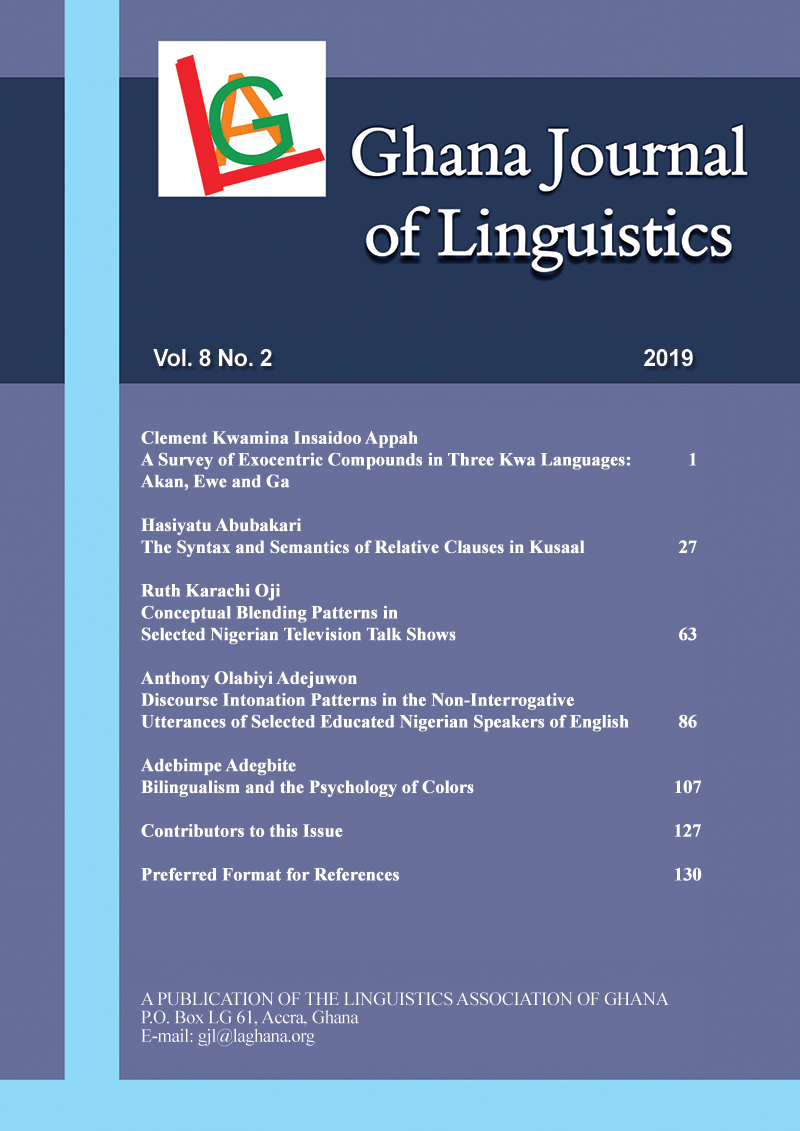Main Article Content
Bilingualism and The Psychology of Colors
Abstract
The reality of humans spans beyond spoken language into varieties of extra linguistic avenues such as colors, clothing, pictures and inscriptions through which they express themselves. Color system is a general concept across cultures even though distinction through names and ascribed meaning(s) to each color vary per culture. This research investigated the strong statements about identity and attitude that bilinguals can make through their choice of colors depending on how conducive they find their linguistic community. Comparison was made between Chinese-English bilinguals in the US and Yoruba-English bilinguals in Nigeria using Ethnolinguistic Vitality Theory of sociolinguistics (EVT). Findings revealed that Chinese-English bilinguals had an overwhelming positive evaluation of their native language while Yoruba-English bilinguals had a more positive evaluation of English. Also, the importance of an individual’s language within their immediate environment can influence their evaluation of such language. Respondents utilized colors, as a universal concept, to reveal implicit information such as attitude and perception. The study concludes that language attitude can be largely presumed upon cognitive perception of a language based on influencing societal factors, and that EVT is very much applicable to beyond ordinary spoken utterance analysis of language.




